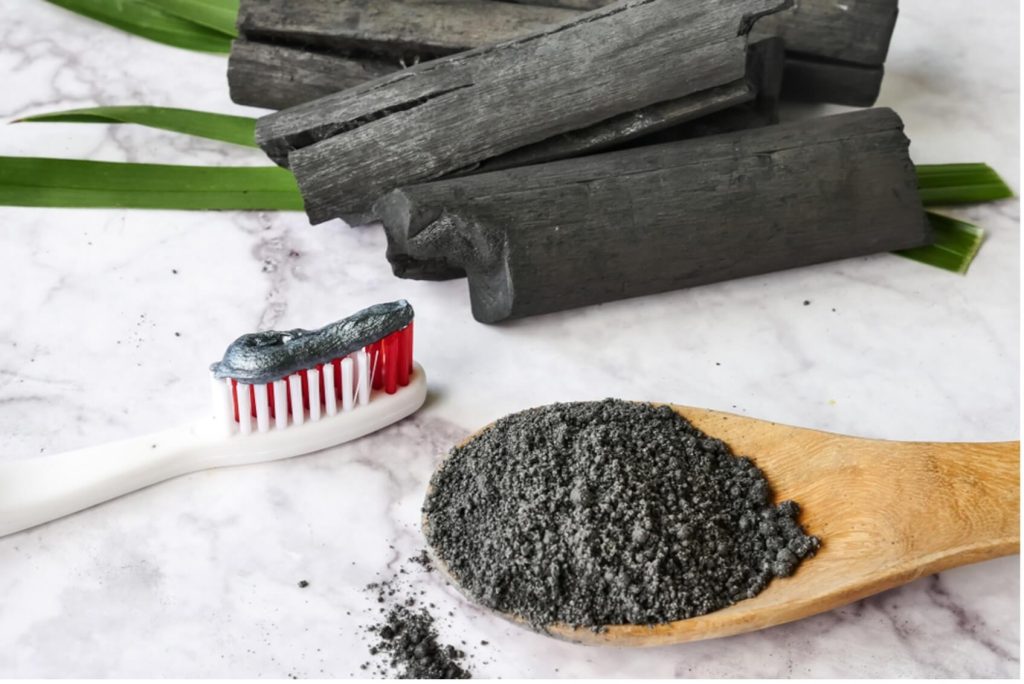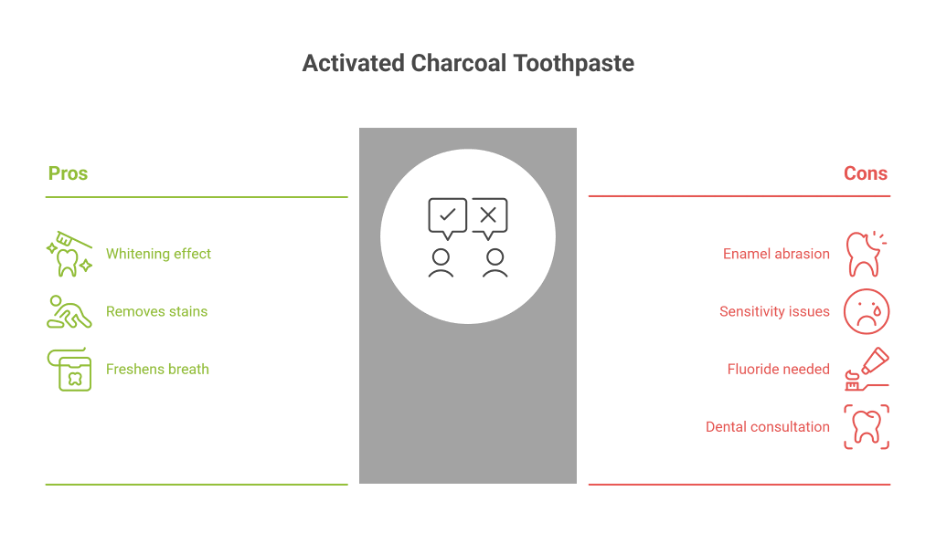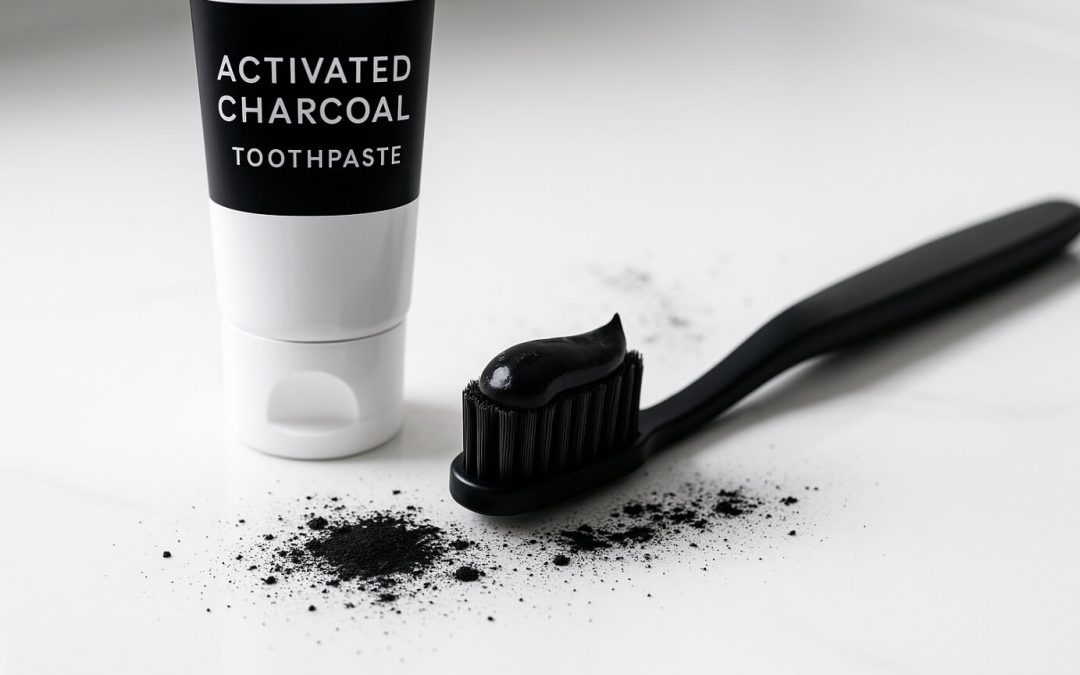Activated charcoal toothpaste has surged in popularity, promising a natural way to whiten teeth and achieve a brighter smile. But does it live up to the hype?
This article provides a comprehensive, evidence-based overview of activated charcoal toothpaste, exploring its potential benefits, the risks it may pose to your oral health, and how to use it safely, if you choose to do so.
What is Activated Charcoal Toothpaste?
Activated charcoal isn’t the same as the charcoal used in your barbecue. It’s a fine, black powder made from heating carbon-rich materials like wood, coconut shells, or bamboo to very high temperatures and then “activating” it with gases or chemicals.
This process increases the surface area and porosity of the material, making it highly absorbent.
In toothpaste, activated charcoal is marketed as a natural ingredient that can draw out stains and impurities from your teeth.
Unlike regular toothpaste, many activated charcoal options are fluoride-free.
The Claimed Benefits: Does It Really Whiten?
The primary appeal of activated charcoal toothpaste lies in its purported whitening abilities. The idea is that the porous charcoal binds to surface stains caused by coffee, tea, wine, and other foods, effectively removing them and revealing a brighter smile.

While activated charcoal can remove surface stains, the scientific evidence supporting its whitening effect is limited.
Some studies suggest it may have a modest impact on surface stains, but it’s generally considered less effective than traditional whitening toothpastes or professional treatments.
Penn Dental Medicine notes that charcoal toothpastes appear to have a “lower whitening effect than other alternatives.”
It’s important to remember that activated charcoal only addresses surface stains. It doesn’t change the natural color of your teeth or remove deeper, intrinsic stains.
The Risks and Potential Side Effects
Despite its natural appeal, activated charcoal toothpaste isn’t without potential risks:
Abrasiveness and Enamel Erosion
One of the biggest concerns is its abrasiveness. Activated charcoal particles can be quite harsh on tooth enamel, the protective outer layer of your teeth.
Over time, excessive abrasion can wear down enamel, leading to increased sensitivity, and a higher risk of cavities.
Gum Irritation
Some individuals may experience gum irritation or inflammation from using activated charcoal toothpaste. If you notice any redness, swelling, or discomfort in your gums, discontinue use and consult your dentist.
Paradoxical Staining
While it aims to whiten, activated charcoal can sometimes lead to paradoxical staining.
Charcoal particles can accumulate in the tiny cracks and crevices of your teeth, leaving a gray or black residue, especially around the edges of fillings or restorations.
Lack of Fluoride
Many activated charcoal toothpastes are formulated without fluoride, a crucial mineral for preventing tooth decay.
Fluoride strengthens enamel and helps protect against acid attacks from bacteria and sugars. Skipping fluoride can increase your risk of developing cavities
Impact on Dental Restorations
The abrasive nature of activated charcoal can also affect dental restorations like fillings, crowns, and veneers. It may scratch or dull the surface of these materials, altering their appearance and potentially shortening their lifespan.
What the Experts Say
The American Dental Association (ADA) has not awarded its Seal of Acceptance to any activated charcoal toothpaste.
This seal indicates that a product has been rigorously tested and proven safe and effective.
Many dentists express caution regarding the use of activated charcoal toothpaste due to the potential for enamel erosion and the lack of fluoride.
They generally recommend sticking to traditional fluoride toothpastes and exploring other whitening options under professional guidance.
How to Use Activated Charcoal Toothpaste Safely (If You Choose To)
If you’re considering using activated charcoal toothpaste, here are some guidelines to minimize potential risks:

- Frequency of Use: Limit use to no more than once or twice a week.
- Proper Brushing Technique: Use a soft-bristled toothbrush and apply gentle pressure to avoid abrasion.
- Rinse Thoroughly: Rinse your mouth thoroughly with water after brushing to remove all charcoal particles.
- Follow Up with Fluoride Toothpaste: Brush with a fluoride toothpaste after using activated charcoal toothpaste to strengthen enamel.
- Consult Your Dentist: Talk to your dentist before using activated charcoal toothpaste, especially if you have sensitive teeth, thin enamel, or dental restorations.
Alternatives to Activated Charcoal Toothpaste
If you’re looking for safe and effective ways to whiten your teeth, consider these alternatives:
- Traditional Whitening Toothpastes: Look for toothpastes containing hydrogen peroxide or other whitening agents.
- Baking Soda: Baking soda is a mild abrasive that can help remove surface stains. However, use it sparingly to avoid enamel erosion.
- Hydrogen Peroxide: Rinsing with a diluted hydrogen peroxide solution can help brighten your smile.
- Professional Whitening Treatments: Talk to your dentist about professional whitening options like in-office bleaching or custom-made whitening trays.
Conclusion: Pick the Safest Teeth Whitening Option
While activated charcoal toothpaste may offer some surface stain removal, the evidence supporting its whitening claims is limited, and the potential risks to your enamel and overall oral health are significant. Bur Oak Dental recommends consulting with your dentist to determine the safest and most effective teeth whitening options for your individual needs. Maintaining a healthy smile involves a balanced approach that prioritizes enamel protection, fluoride use, and professional dental care in Markham.


